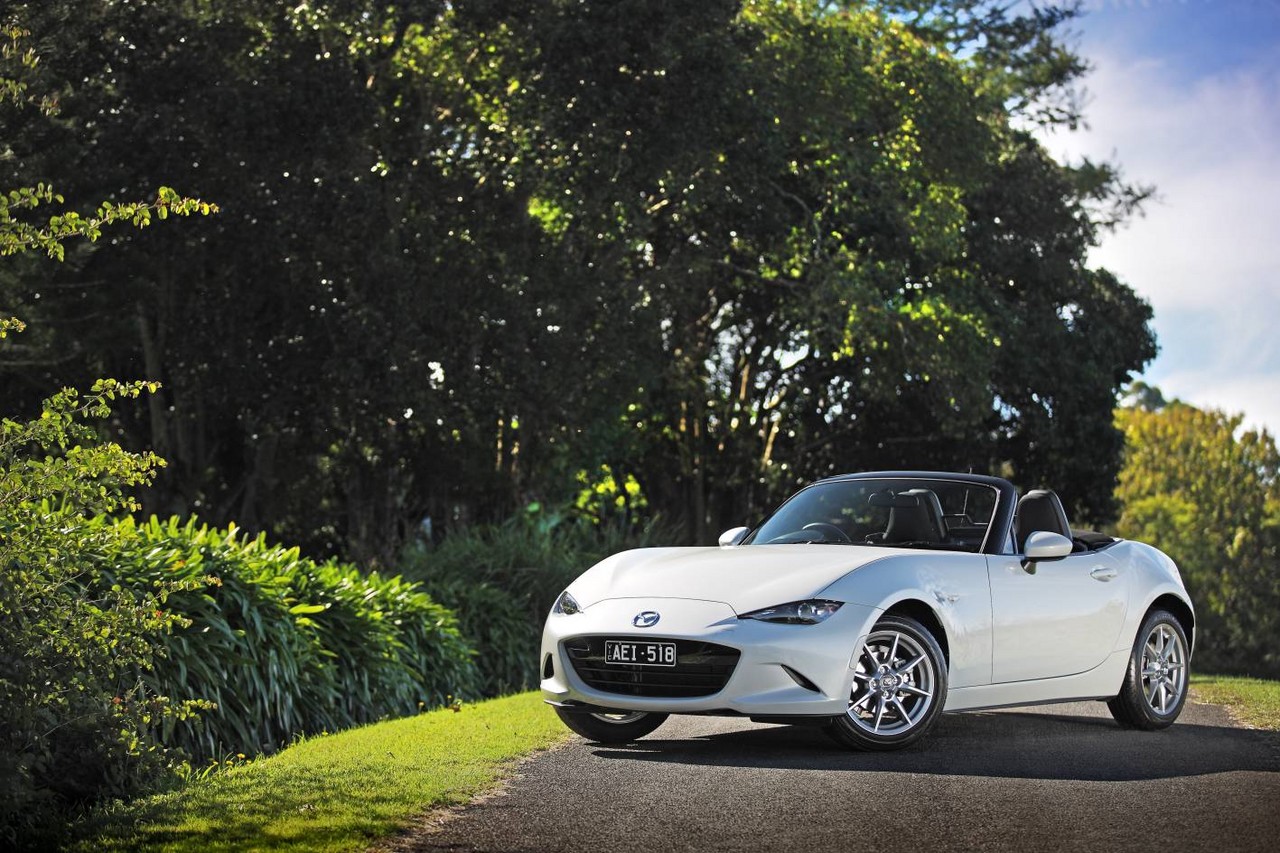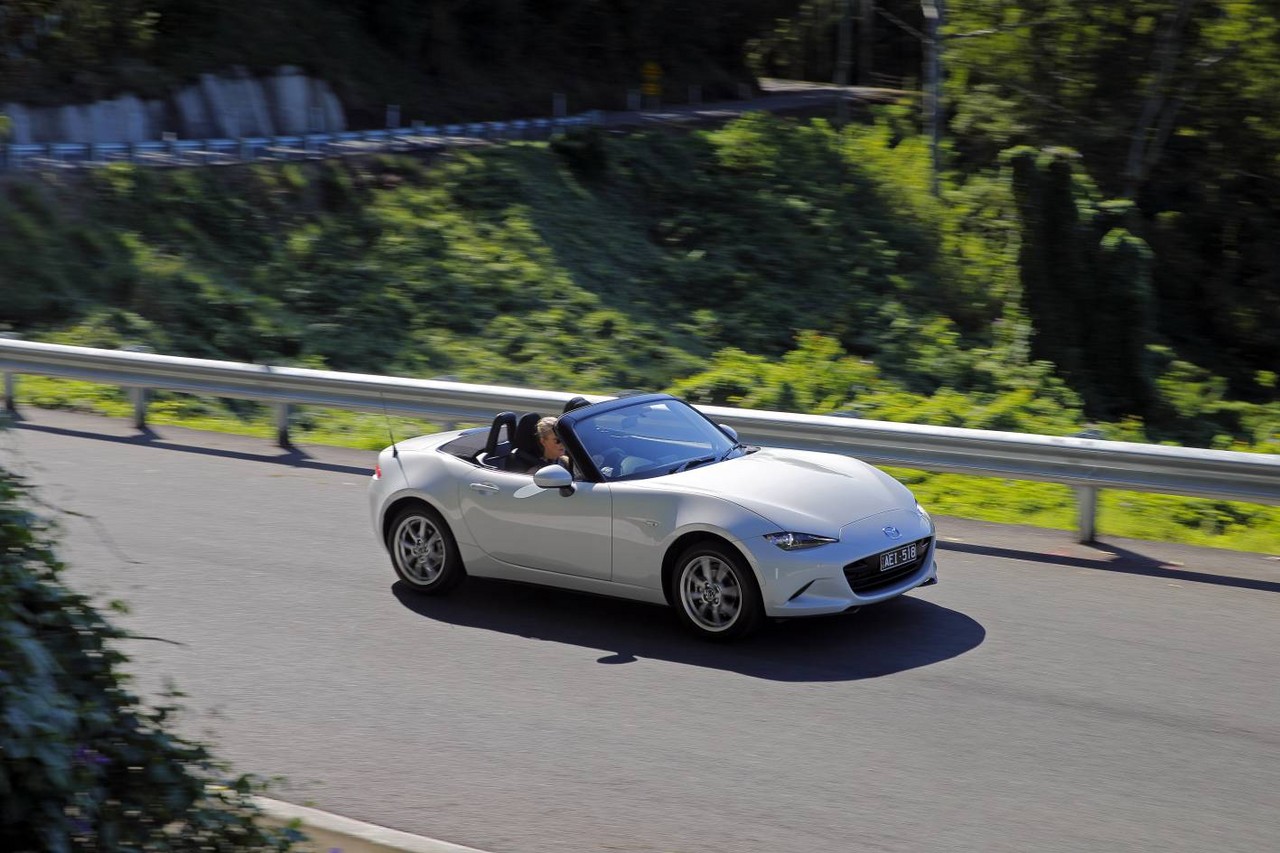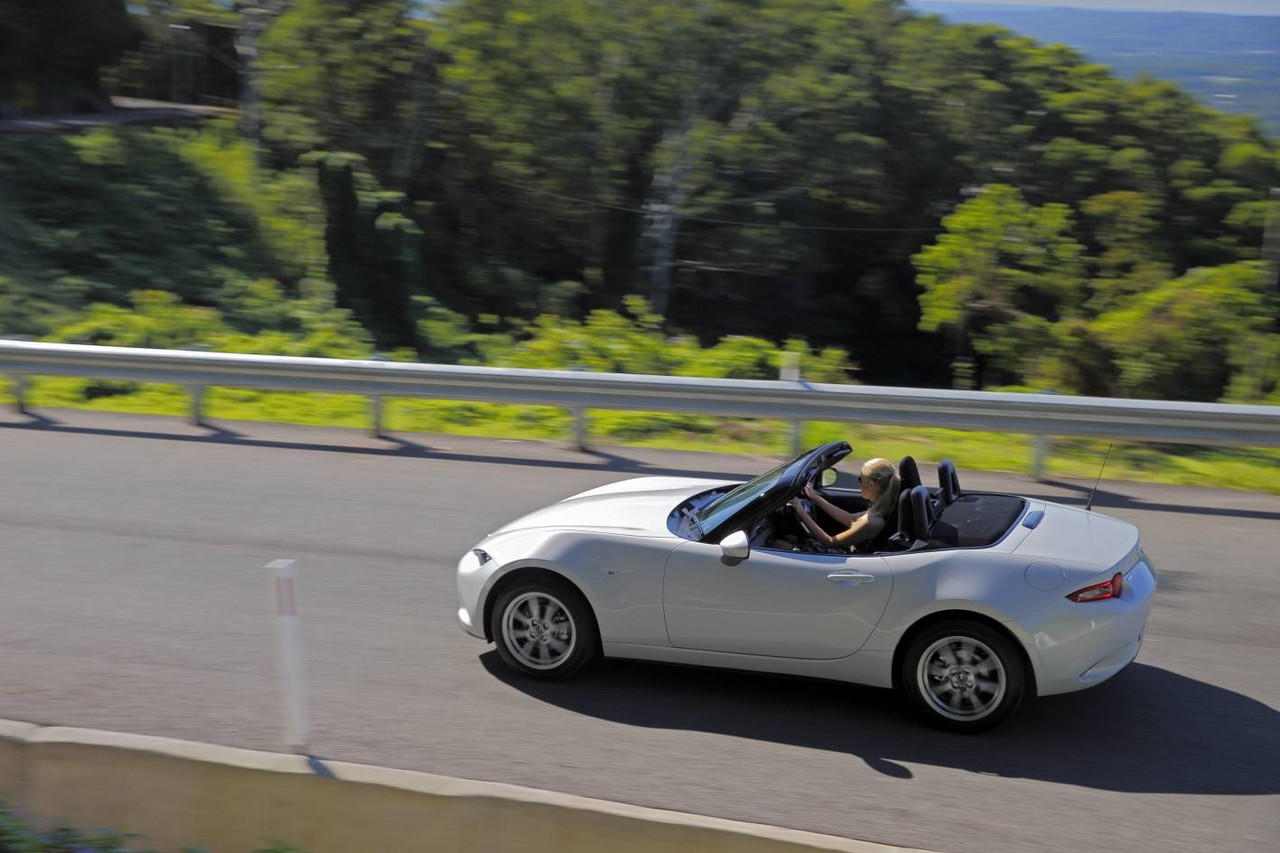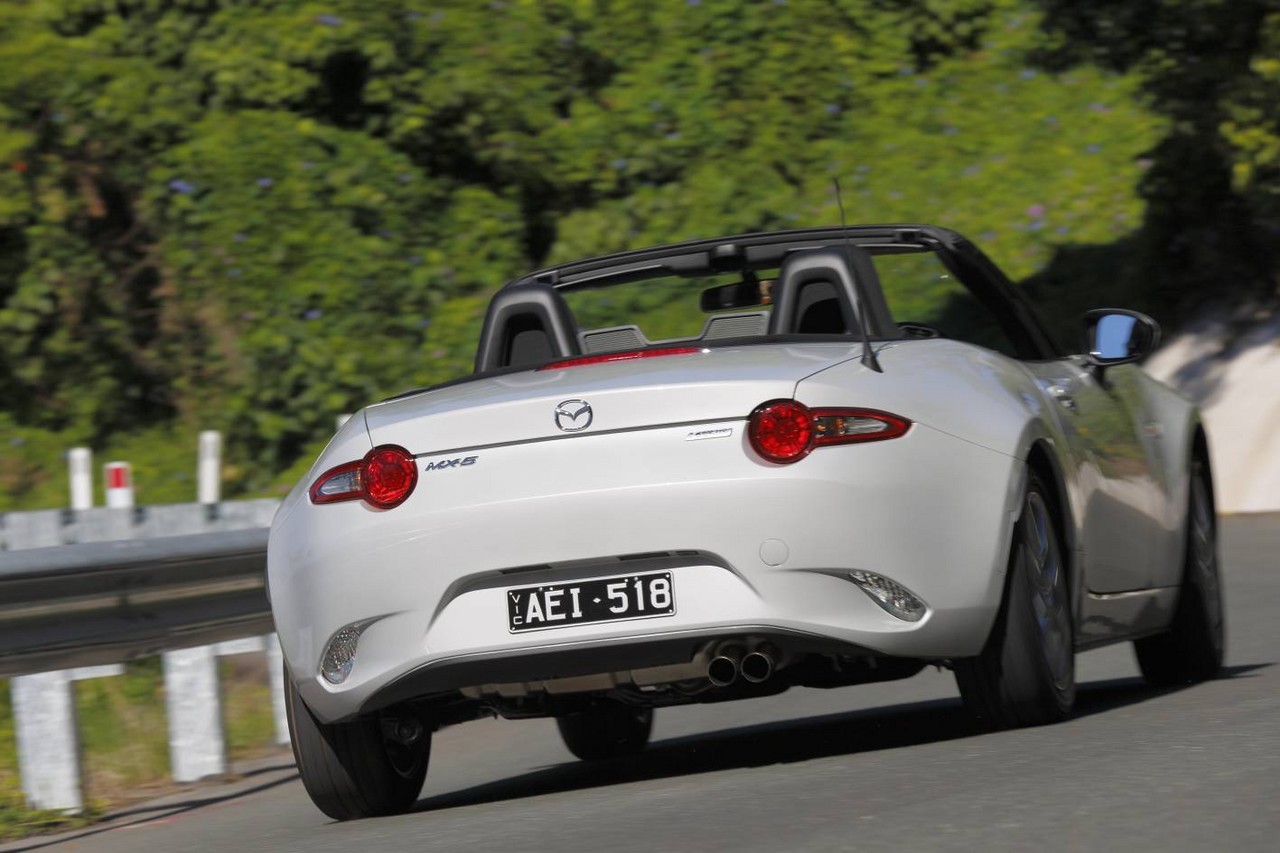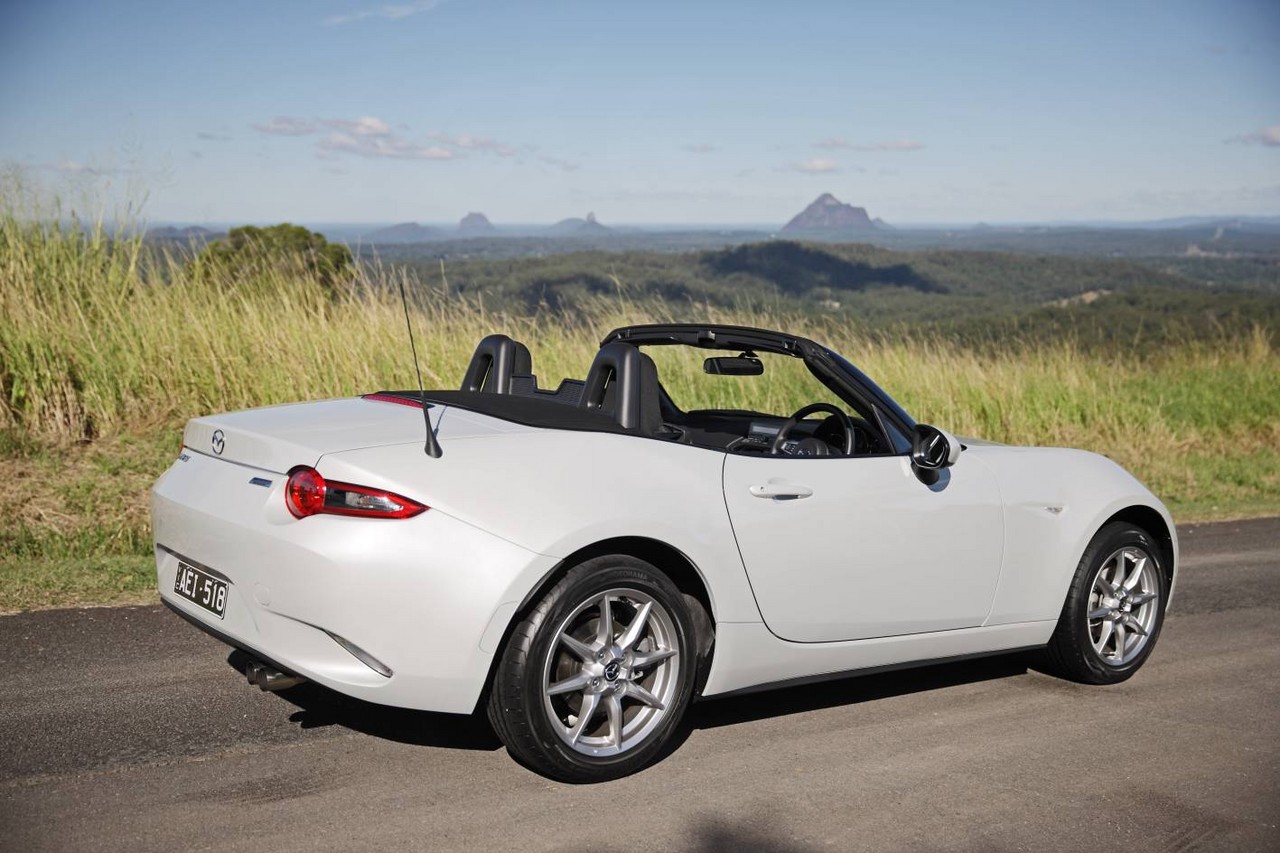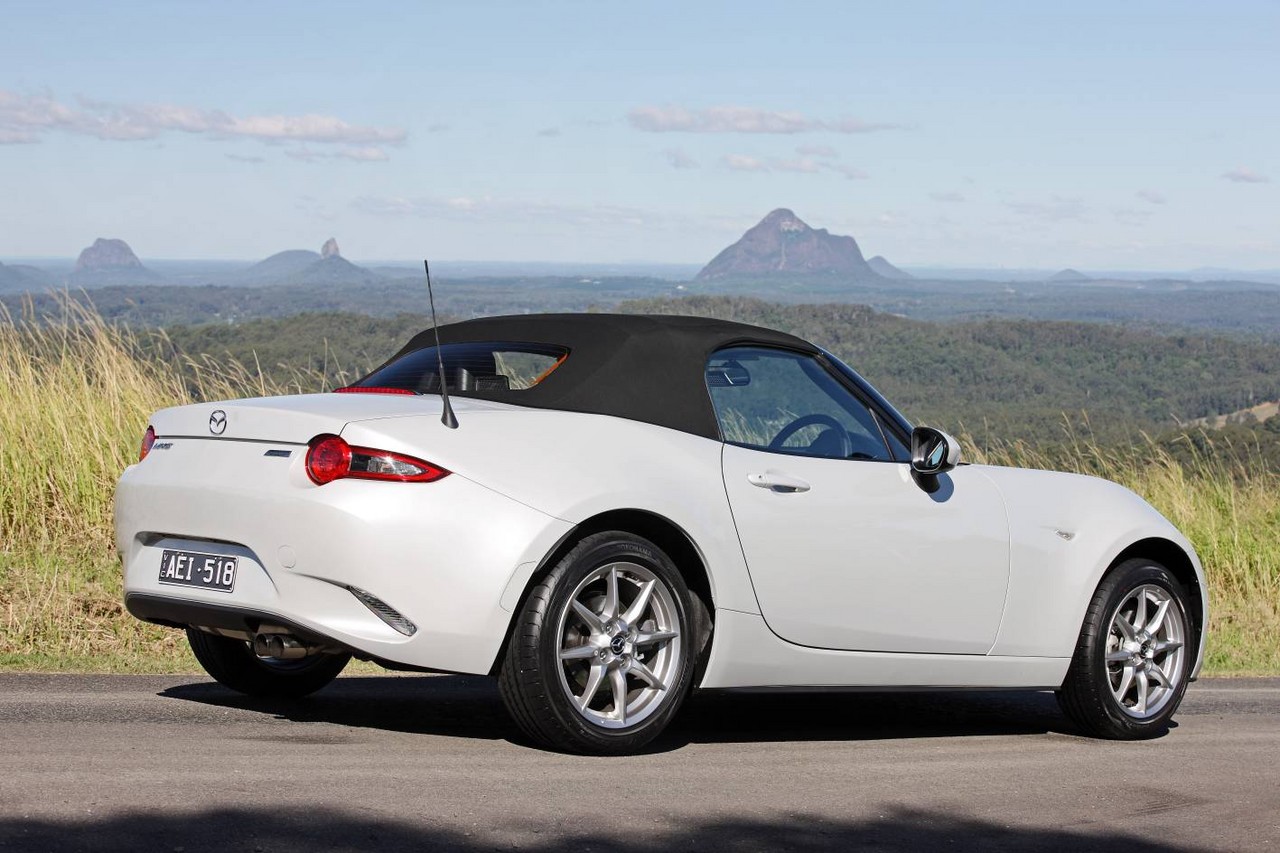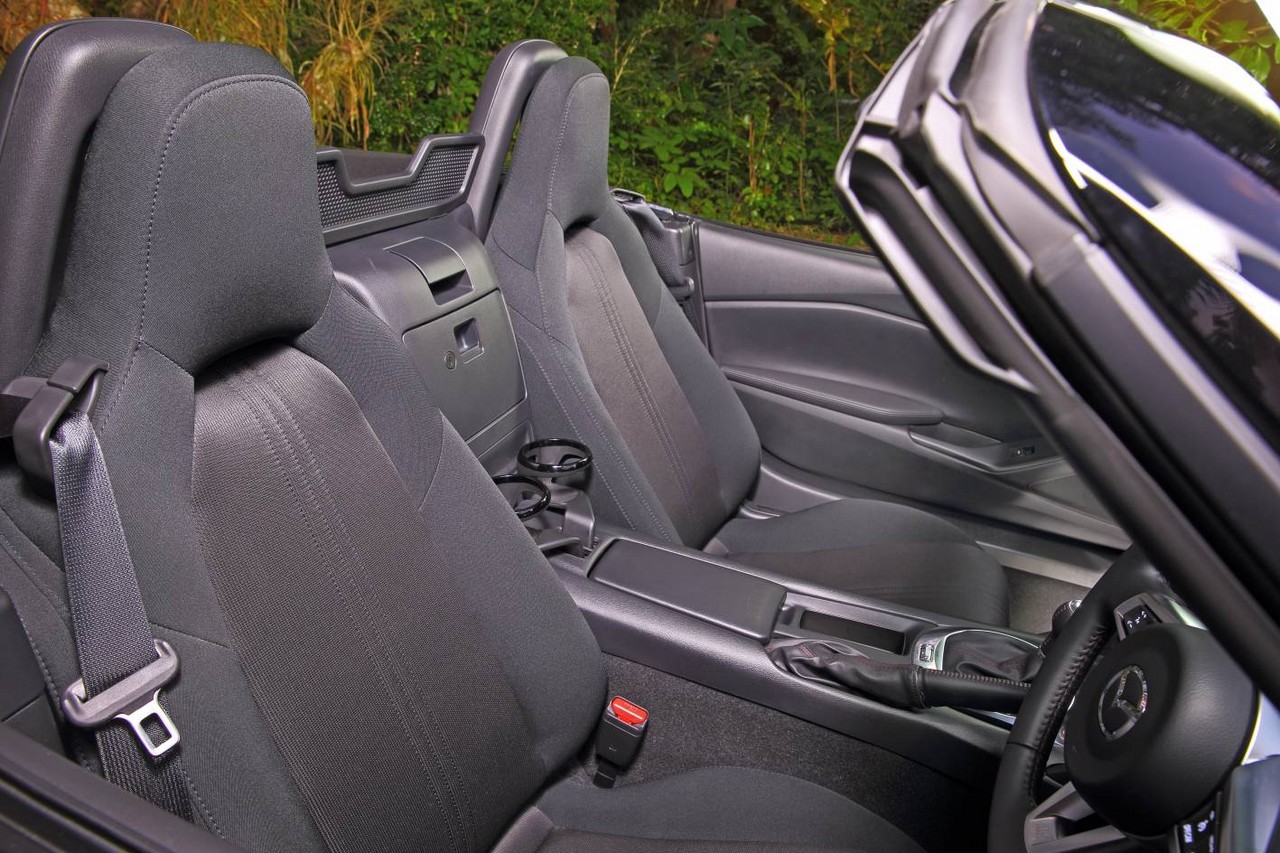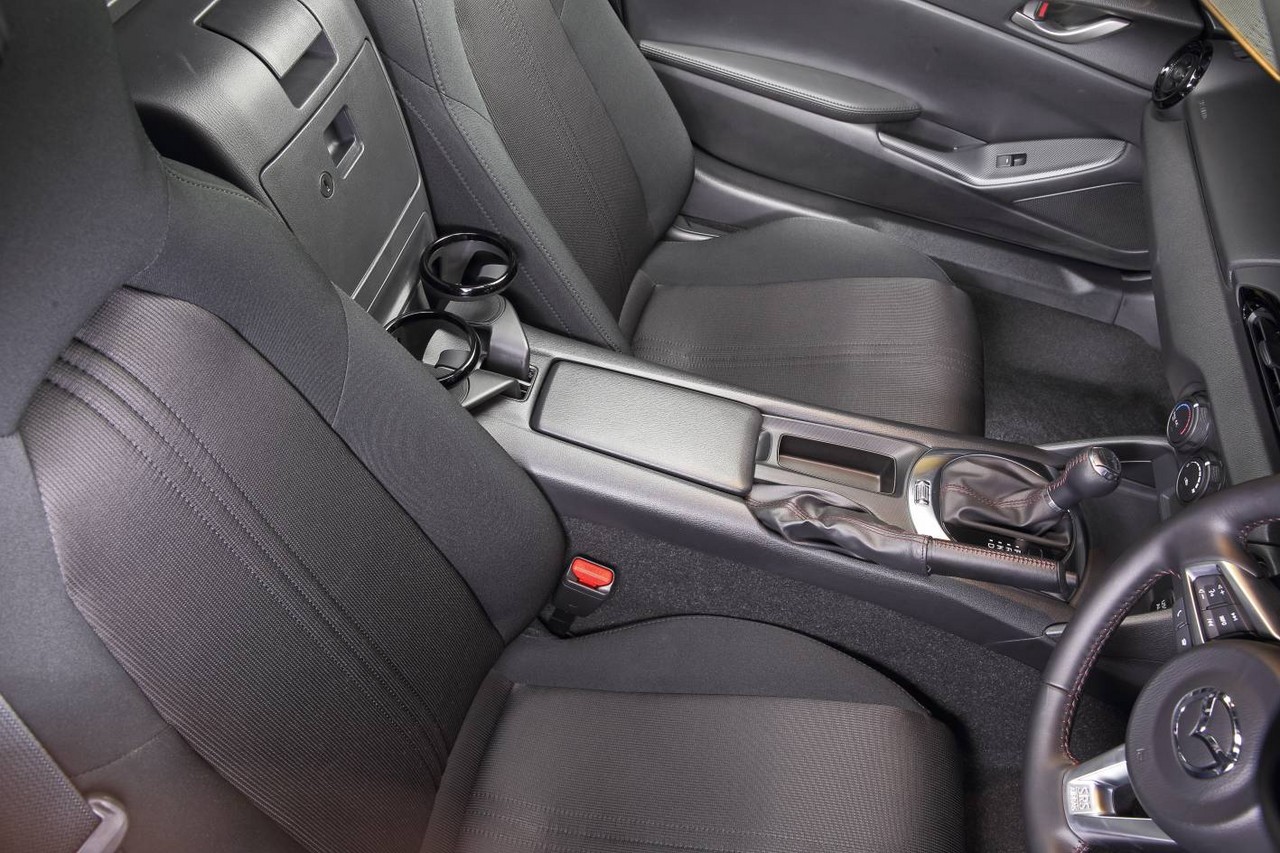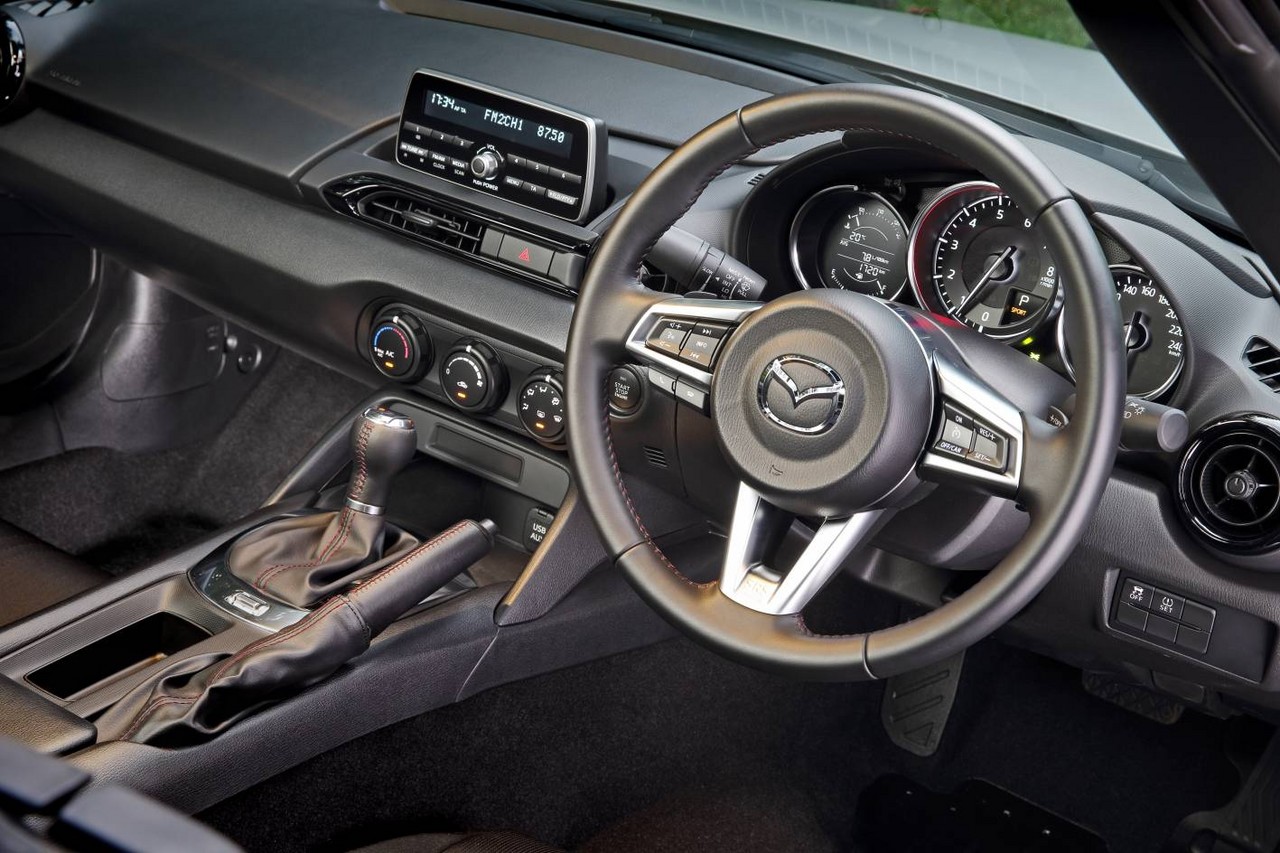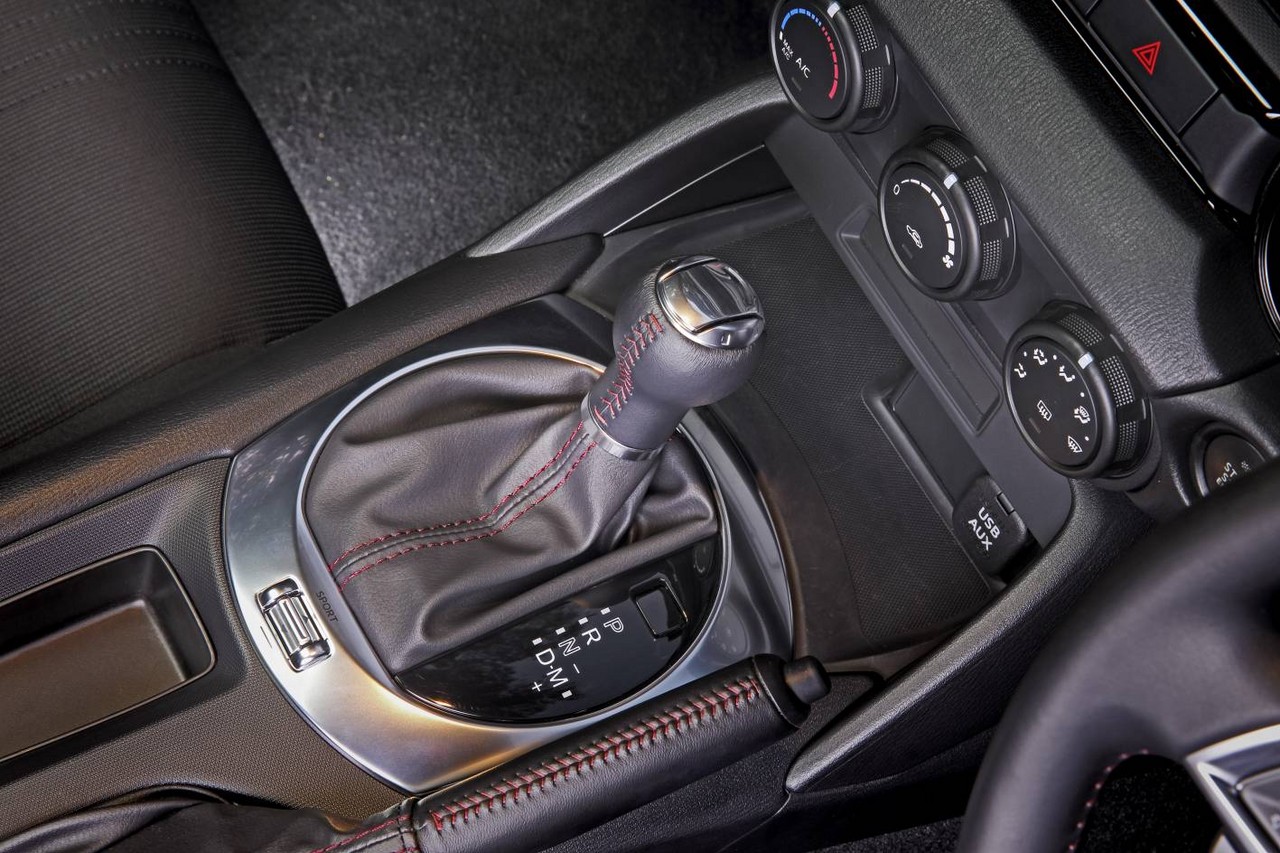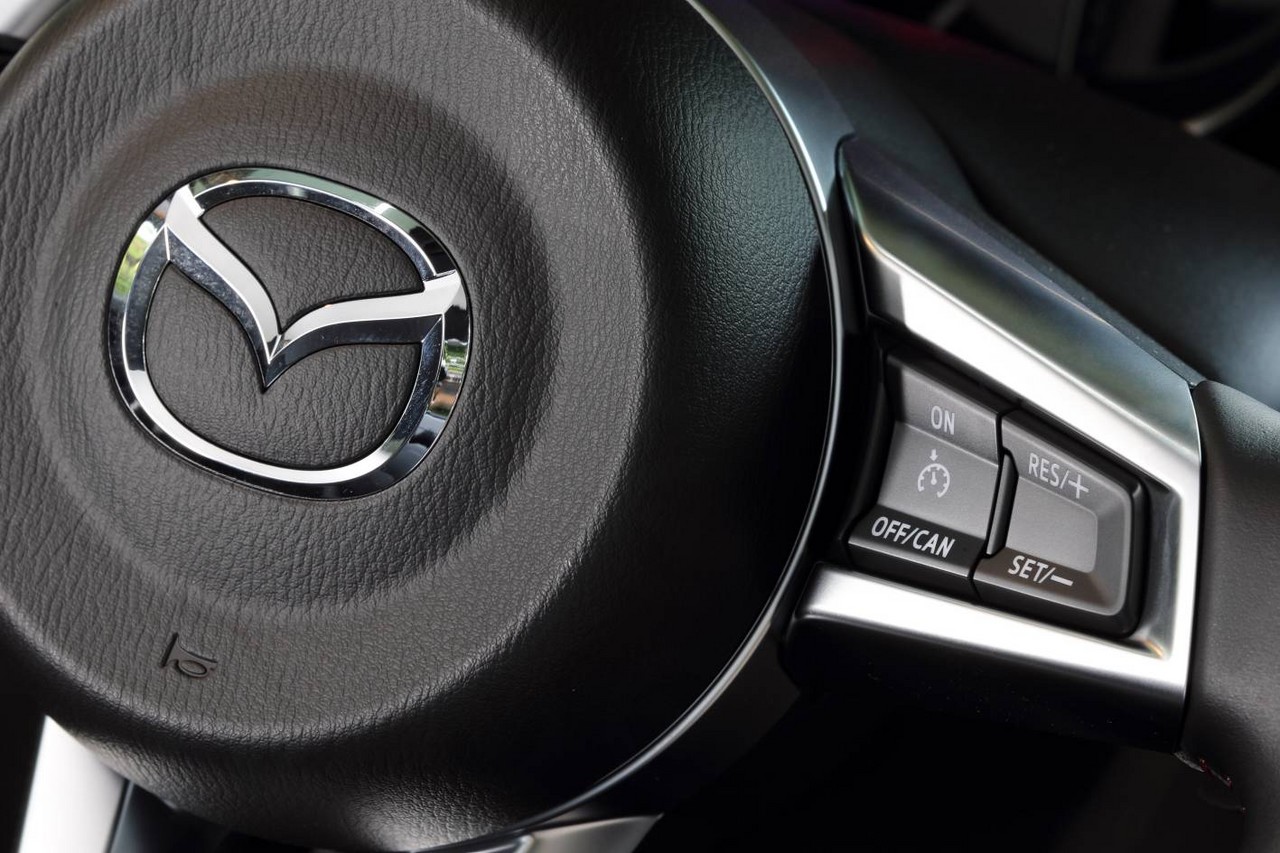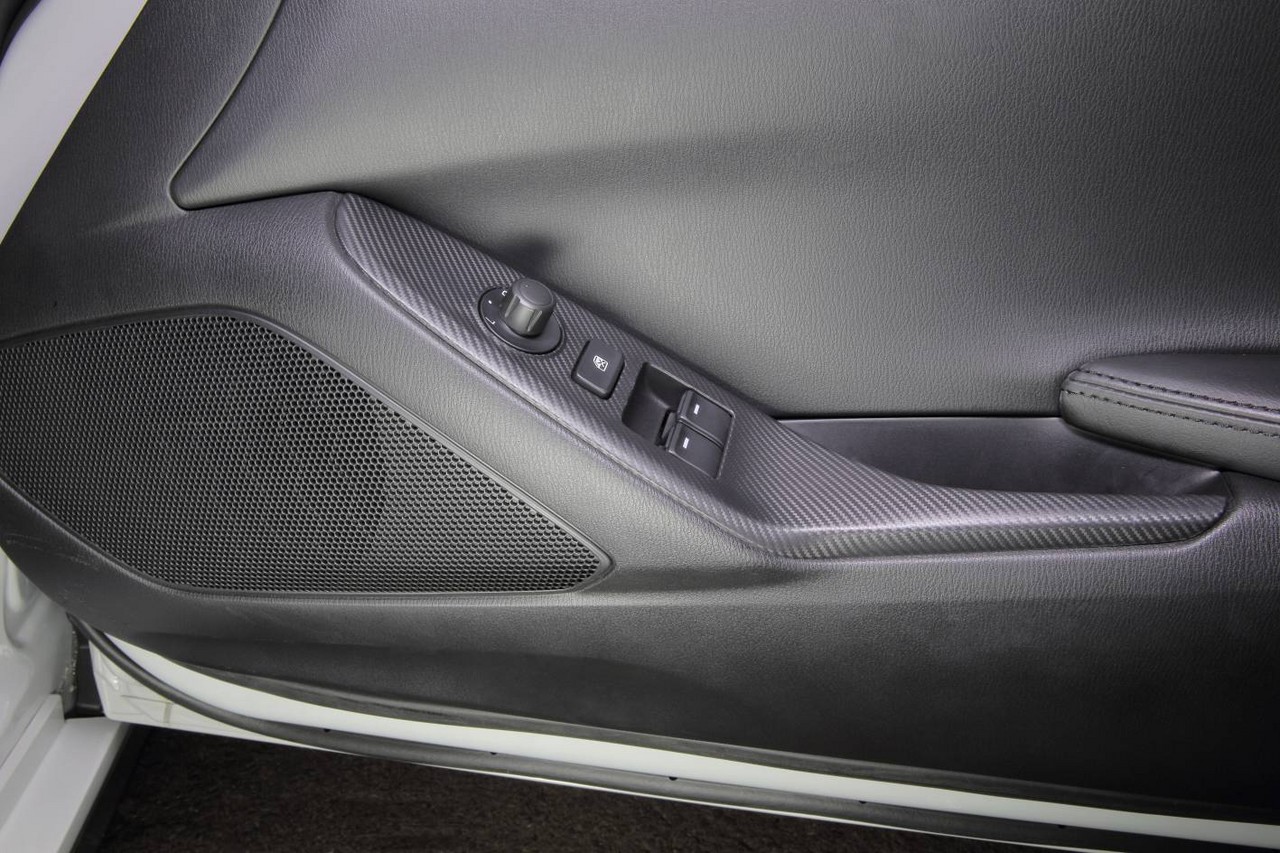
- Free-revving 1.5- and 2.0-litre ‘SkyActiv’ petrol engines
- Agile, balanced chassis makes for excellent dynamics
- Accurate steering
- Open-top appeal
- Heavier 2.0-litre engine reduces agility
- Rear-end unsettled by bigger bumps
- Engine noise
- Limited headroom and steering wheel lacks reach adjustment
Overview
Released in Australia in August 2015, the Mazda ND MX-5 was a two-door convertible with a soft-top roof; please note that the Mazda ND MX-5 RF has been reviewed separately. Manufactured at Mazda’s Ujina plan in Japan, the rear-wheel drive Mazda MX-5 was powered by 1.5- and 2.0-litre four-cylinder petrol engines were mated to six-speed manual and automatic transmissions. Furthermore, the MX-5 range consisted of Roadster and Roadster GT variants.
In September 2018, the Mazda MX-5 Roadster range was revised as the MX-5 Roadster GT was no longer available with a 1.5-litre engine.
SkyActiv-G engines
The 1.5-litre SkyActiv-G four-cylinder engine had an aluminium block and cylinder head, electronically-controlled direct petrol injection, double overhead camshafts, four valves per cylinder, electric intake sequential valve timing and oil exhaust sequential valve timing (dual sequential valve timing or ‘dual S-VT’. Furthermore, the 1.5-litre engine had a compression ratio of 13.0:1 and 7500 rpm redline. The 2.0-litre SkyActiv-G engine had similar properties, but with a 6800 rpm redline.
For both engines, 95 RON premium unleaded petrol was recommended.
SkyActiv-G engines: post-September 2018
From September 2018 deliveries, the following changes were introduced for the 2.0-litre SkyActiv-G engine:
- A larger throttle diameter, ‘common type’ intake ports (previously discrete type), shortened intake manifold length and increased valve diameter. The common type intake ports increased tumble-swirl for faster combustion;
- For the pistons, lower crown height, a reduced skirt area and a 27 gram mass reduction (per piston) to reduce mechanical friction;
- For the connecting rods, newly-developed high-rigidity bolts and ‘optimised’ thickness for a 41 gram mass reduction (per rod);
- New high-diffusion fuel injectors which sprayed fuel over a shorter distance to prevent fuel sticking to the cylinder walls;
- The redline was raised to 7500 rpm (previously 6800 rpm);
- A new control scheme to achieve three-stage, split fuel injection in the engine’s low-rev/high-load operating range;
- A re-balanced crankshaft (still with eight counterweights) which contributed to a ‘minimal’ mass increase;
- For the exhaust valves, increased valve and exhaust port diameters (the latter to suppress exhaust gas separation), increased exhaust valve opening angle and light height, and increased internal diameter for the exhaust manifold. According to Mazda, these changes contributed to a 30 per cent reduction in pumping losses; and,
- For the main silencer, a new inner structure (i.e. new exhaust gas routing and newly-adopted fiberglass materials) to absorb high-frequency sounds.
The following changes were also introduced for the 1.5-litre SkyActiv-G engine for post-September 2018 deliveries:
- A higher-pressure fuel pump so the fuel injectors could feed more finely atomised fuel particles across a broader range through a multi-stage, split-injection method; and,
- Newly-designed piston crowns which had a stepped upper rim.
Beyond these changes, Mazda sought to reduce the lag between pressing the accelerator and engine response –
- For models with manual transmissions, uneven changes in acceleration – caused by torsion and released in torque-transmitting components – were suppressed using predictive control measures. A dual-mass flywheel was also introduced; and,
- For models with automatic transmissions, acceleration control was improved and the final drive ratio was raised from 3.454 to 3.583 for better synchronisation between the engine and torque converter rotation. Furthermore, shift timing at turn-in and torque control at turn-out were also revised for ‘greater precision in sporty driving situations’.
| Engine | Trans. | Years | Model | Peak power | Peak torque |
|---|---|---|---|---|---|
| 1496 cc SkyActiv-G petrol I4 | 6sp man., 6sp auto |
2015-18 | Roadster, Roadster GT |
96 kW at 7000 rpm | 150 Nm at 4800 rpm |
| 2018-on | Roadster | 97 kW at 7000 rpm | 152 Nm at 4500 rpm | ||
| 1998 cc SkyActiv-G petrol I4 | 6sp man., 6sp auto |
2015-18 | Roadster, Roadster GT |
118 kW at 6000 rpm | 2200 Nm at 4600 rpm |
| 2018-on | Roadster GT | 135 kW at 7000 rpm | 205 Nm at 4000 rpm |
Dimensions and body
Compared to the Mazda NC MX-5 , the ND MX-5 was 105 mm shorter (at 3915 mm), 15 mm wider (1735 mm), 15 mm lower (1230 mm) and had a 20 mm shorter wheelbase (2310 mm). Despite the smaller external dimensions, the cabin was 65 mm longer (at 940 mm), 10 mm wider (1425 mm) and 10 mm higher (1055 mm), though shoulder room was reduced by 30 mm (to 1325 mm).
With a kerb weight of 1009 kg, MX-5 Roadster with the 1.5-litre engine was 91 kg lighter than the NC MX-5 due to its more compact design, lighter soft-top roof and the use of aluminium for the model’s bonnet, boot lid, front fender and bumper reinforcements. Furthermore, the ND MX-5 had a 50:50 front:rear weight distribution.
Suspension and steering
The Mazda ND MX-5 had double wishbone front suspension and multi-link rear suspension. For the front suspension, a negative kingpin offset was adopted and castor angle was reduced from 8° to 7°. The rear suspension utilised a new truss structure for the cross-member to increase rigidity, while the positioning of the rear links was revised for improved geometry when cornering.
The ND MX-5 introduced Mazda’s dual pinion electric power-assisted steering.
Safety equipment
Standard safety equipment for the Mazda MX-5 included dual front airbags, side airbags, ABS, electronic brake force distribution, brake assist, electronic stability control, traction control and front seatbelts with pre-tensioners and load limiters.
From October 2016 production, the Mazda MX-5 was also fitted with:
- Blind Spot Monitoring (BSM): used a quasi-milliwave radar and operated at speeds in excess of 10 km/h to detect vehicles approaching from behind or in the driver’s blind spot (on either side of the vehicle); and,
- Rear Cross Traffic Alert (RCTA): could warn the driver of approaching traffic when reversing from a parking space by sounding an audible alert and illuminating LED icons in the door mirrors.
From March 2018, the Mazda MX-5 GT was equipped with –
- Lane Departure Warning (LDW): used a windscreen mounted camera to monitor the vehicle’s position relative to lane markings. If the driver was about to cross lane markings without the turn indicator having been applied, an audible alert would sound; and,
- Mazda’s ‘Adaptive LED Headlamps’ (ALH): combined ‘Glare-free High Beam’, which controlled the illumination coverage of the high beams to avoid dazzling other drivers, and ‘Wide-range Low Beam’, which expanded the area of illumination.
In September 2018, standard safety technologies for the Mazda MX-5 were extended to include:
- Smart City Brake Support (Forward) with pedestrian detection (SCBS F): operating at speeds between 4 km/h and 80 km/h for vehicle detection and 10 km/h to 60 km/h for pedestrian detection, SCBS Forward used a near-infrared sensor that was mounted on the windscreen for ‘precision detection’ of objects up to six metres ahead of the vehicle. When an obstacle was detected and a high risk of collision was assessed, the brakes would be applied automatically to avoid or reduce the severity of the collision (i.e. autonomous emergency braking or AEB); and,
- Traffic Sign Recognition (TSR): used the forward-facing camera to detect speed limit, ‘No Entry’ and ‘Stop’ signs while driving and display them on the Active Driving Display.
From September 2018, the Mazda MX-5 GT was further equipped with:
- For SCBS Reverse: operated at speeds between 2 km/h and 8 km/h and used ultrasound sensors in the rear bumper to detect obstacles up to two metres behind the vehicle. Like SCBS F, AEB would be initiated when an obstacle was detected and there was a high risk of a collision; and,
- Driver Attention Alert (DAA): operating at speeds above 65 km/h, the DAA system initially observed driver behaviour – such as steering wheel operation, vehicle speed and lane positioning – for 20 minutes to establish a benchmark. The DAA system then monitored driver behaviour for signs of fatigue and recommended rest breaks if detected. Furthermore, alerts would be issued if the driver had been driving continuously for more than two hours.
Brakes
The Mazda ND MX-5 Roadster 1.5i had 258 mm (diameter) ventilated front brake discs and 255 mm solid rear discs. The MX-5 Roadster 2.0i, however, had 280 mm ventilated front brake discs and 280 mm solid rear discs.
Euro NCAP testing
In Euro NCAP testing , the Mazda ND MX-5 received a four star safety rating which included an 84 per cent adult occupant protection rating and an 80 per cent child occupant protection rating. In the frontal offset test, protection of the front passenger and the driver’s thighs and feet were rated as good, though protection of the driver’s head, chest and lower legs was rated as adequate (i.e. a slight risk of serious injury). In the side impact test, chest protection was assessed as adequate; in the more severe pole test, chest protection was rated as marginal.
Features: Mazda MX-5 Roadster
Standard features for the MX-5 Roadster 1.5i included 16 x 6.5J silver alloy wheels with 195/50 R16 84V tyres, six speaker sound system with auxiliary inputs (3.5 mm/USB/iPod), Bluetooth mobile phone connectivity and audio streaming, black cloth seat trim, air conditioning, cruise control, LED headlights, leather-wrapped steering wheel and gear shift knob, remote central locking, power windows and mirrors, a tilt adjustable steering wheel, push-button start, tyre pressure monitoring, a trip computer and an immobiliser.
The MX-5 Roadster 2.0i was further equipped with 17 x 7.0J gunmetal alloy wheels with 205/45 R17 84W tyres and LED daytime running lights.
As standard, all Mazda MX-5 models with manual transmissions were fitted with a limited slip differential.
Features: Mazda MX-5 Roadster GT
Relative to Roadster 1.5i, the MX-5 Roadster GT 1.5i was further equipped with a Bose sound system with a 203 watt amplifier nine speakers, Mazda’s ‘MZD Connect’ system with a seven-inch touchscreen, satellite navigation and Internet radio integration, leather seat trim (black or optional tan), heated front seats, climate control air conditioning, LED daytime running lights, automatic headlights, rain-sensing wipers, proximity key (i.e. keyless entry), heated mirrors and an auto-dimming rear view mirror. Visually, the Roadster GT 1.5i could be identified by its 16-inch gunmetal alloy wheels and piano black door mirror caps.
The MX-5 Roadster GT 2.0i was distinguished by its 17-inch bright alloy wheels with 205/45 R17 84W tyres.
Paint colours
The Mazda MX-5 was available in Soul Red, Ceramic Metallic, Crystal White Pearl Mica, Jet Black Mica, Meteor Grey Mica and Blue Reflex Mica paint finishes.
March 2018 update
In March 2018, the following updates were introduced for the Mazda ND MX-5 Soft-top:
- For the rear suspension, the upper link bushings were lowered and the rear bump stops were lengthened to improve ride comfort;
- Noise-absorbing material was added to the top of the centre driveline tunnel;
- Holes/gaps around centre driveline tunnel reinforcements were reduced;
- An improved dashboard insulator was fitted; and,
- Vibration-damping and noise-absorbing materials were added to the rear wheel housings.
September 2018 update
In September 2018, the following updates were introduced for the Mazda ND MX-5:
- A rear camera (‘Rear Monitor’) was made standard across the range;
- The steering wheel column gained telescopic adjustment (30 mm);
- The detachable cup holders were made more rigid;
- The seat recline levers gained thicker internal frames ‘to give a more assured feel when operating’;
- Door opening and closing was improved by changing the checker from a three-stage to a two-stage type. The increased distances between the door pause points allowed users to position the doors across a wider range of operation; and,
- Mazda MX-5 Roadster models with 1.5-litre engines were fitted with 16-inch alloy wheels that had a black metallic finish (previously aluminium).
June 2019 update
From June 2019, the Mazda ND MX-5 was equipped with Apple CarPlay and Android Auto smartphone integration.
2019 Mazda MX-5 30th Anniversary Edition
The Mazda MX-5 30th Anniversary Edition was released in Australia in June 2019. Based on the Mazda MX-5 Roadster GT, the Mazda MX-5 30th Anniversary Edition was distinguished by its Rays ZE40 RS30 forged alloy wheels, Racing Orange-painted Brembo front callipers and Nissin rear callipers, Racing Orange paint finish and anniversary badge. The MX-5 30th Anniversary Edition was also fitted with Bilstein dampers.
Inside, the Mazda MX-5 30th Anniversary Edition featured orange piping and stitching on the Recaro seats, Alcantara trim for the doors and dashboard, and orange stitching on the steering wheel, shift lever, dash and doors. The Mazda MX-5 30th Anniversary Edition was also equipped with Apple CarPlay and Android Auto smartphone integration.
Thirty Mazda MX-5 30th Anniversary Edition vehicles were released in Australia from a production run of 3000.
Brochure
- Brochure: Mazda ND MX-5 Soft-top (September 2015)
- Brochure: Mazda ND MX-5 Soft-top and MX-5 RF (December 2016)
- Brochure: Mazda ND MX-5 Soft-top and MX-5 RF (June 2019)
Related links
